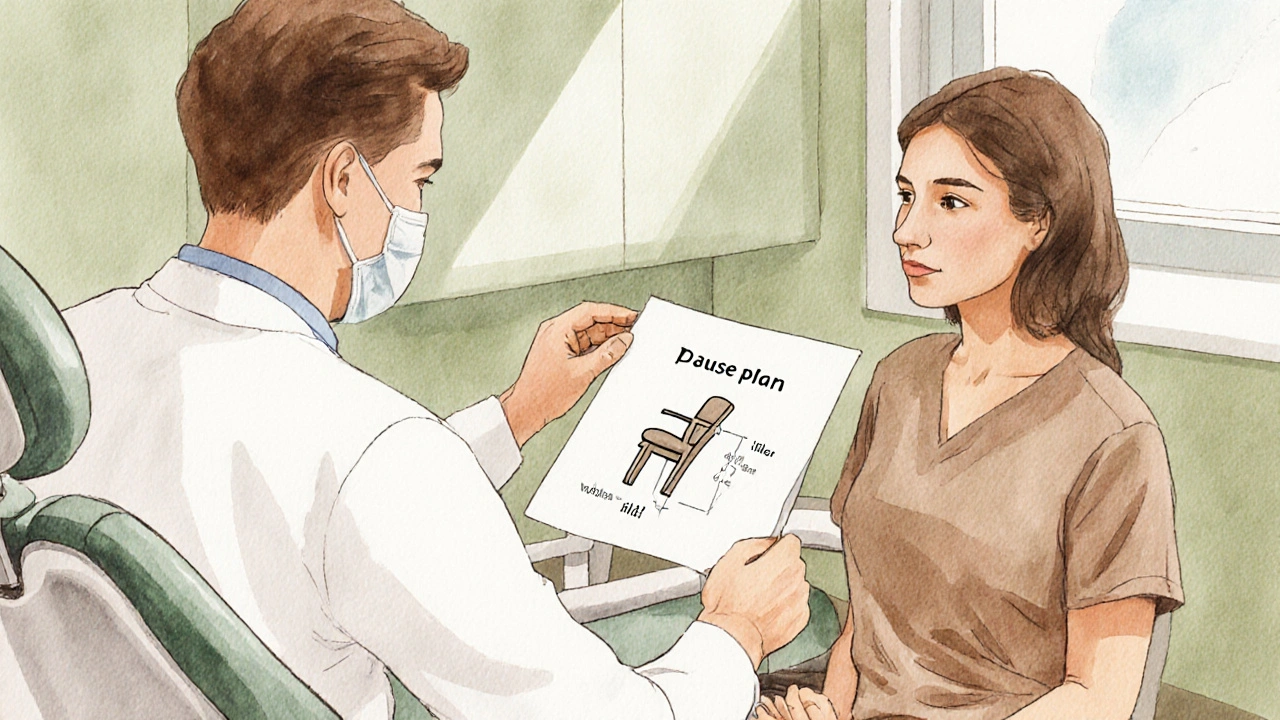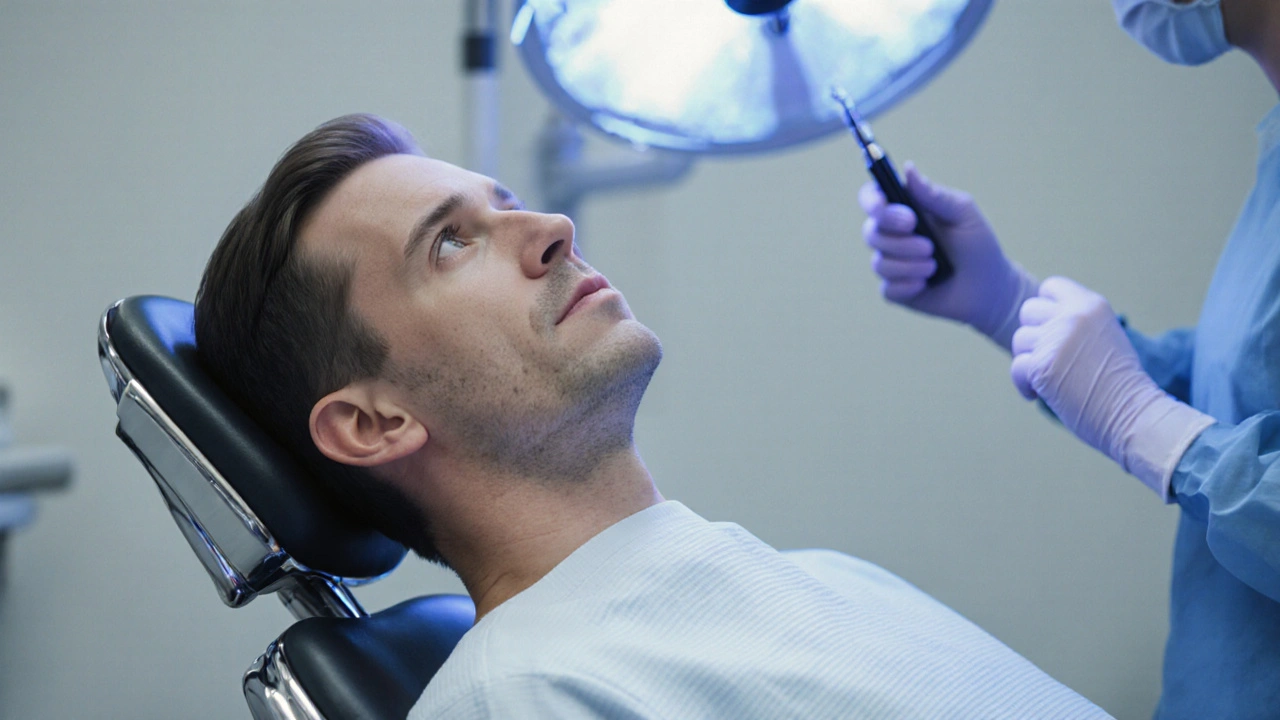Vertigo During Dental Work: Preparation Guide
Personalized Preparation Plan
Feeling a spin while you’re on the dental chair can turn a routine check‑up into a nightmare. If you’ve ever wondered how vertigo dental procedures intersect, you’re not alone. Below is a plain‑spoken guide that walks you through why the sensation shows up, what signs to keep an eye on, and practical steps you can take before, during, and after your appointment.
Why Vertigo Often Pops Up During Dental Work
Vertigo is a type of dizziness that makes you feel like the world is moving when it isn’t. It’s usually tied to the inner ear’s balance organs. The inner ear contains the vestibular system, which sends signals to the brain about head position and motion. When those signals get confused-by rapid head movements, changes in blood pressure, or even strong smells-the brain can misinterpret the data, leading to that spinning feeling.
Dental appointments bring several triggers together:
- Positioning. The dental chair often reclines and tilts the head backward, a pose that can shift fluid in the semicircular canals of the inner ear.
- Stress and anxiety. Anticipation of drills or needles spikes adrenaline, which can raise heart rate and blood pressure, both of which are known vertigo catalysts.
- Open mouth for extended periods. Holding the jaw open changes neck muscle tension and can affect blood flow to the brain.
- Temperature changes. Cold air from dental tools or warm water rinses can trigger vestibular reactions in some people.
Understanding these links helps you see that vertigo isn’t a random hiccup-it’s a predictable response to specific physical and emotional cues.
What Symptoms to Watch For
Not every dizzy spell means vertigo, but certain clues point to the balance system being involved:
- Spinning sensation. A true vertigo episode feels like the room is rotating, not just feeling light‑headed.
- Nausea or vomiting. The brain’s misreading of motion often triggers stomach upset.
- Ring‑like sounds (tinnitus). Some inner‑ear issues produce subtle ringing that spikes during a vertigo attack.
- Loss of balance. You might feel unsteady when you try to sit up or stand after the procedure.
If any of these pop up, let the dentist the oral health professional overseeing your treatment know right away. Stopping the work for a short break can prevent the episode from worsening.

Talk to Your Dentist: The Conversation That Matters
Open communication is the simplest safety net. Before you settle into the chair, tell your dentist about:
- Any history of vertigo, especially conditions like Benign Paroxysmal Positional Vertigo (BPPV) or Ménière’s disease.
- Medications you’re currently on-some antihistamines and blood‑pressure drugs can either help or exacerbate dizziness.
- Recent episodes of dizziness, even if they seem unrelated to dental work.
A good practice is to request a brief “pause plan” where the team knows to stop, sit you upright, and give you a minute to recover if you start feeling off.
Preparation Checklist: How to Ready Yourself
Being proactive can shave minutes off recovery and cut down on anxiety. Use this list the night before and the morning of your appointment:
- Hydrate well. Dehydration lowers blood pressure, which can trigger dizziness once you’re reclined.
- Take an anti‑vertigo medication. Over‑the‑counter options like meclizine work within 30‑60 minutes. Verify dosage with your doctor.
- Eat a light, balanced snack. Empty‑stomach sensations can worsen nausea if vertigo strikes.
- Practice slow, deep breathing. Calming the nervous system reduces adrenaline spikes.
- Bring a support person. Having a familiar face nearby can lower stress levels.
- Wear comfortable clothing. Loose shirts and shoes make it easier to sit upright quickly if needed.
In‑Office Strategies: What the Dental Team Can Do
Many clinics already have vertigo‑friendly protocols. Ask your dental office if they can:
- Adjust the chair. A slight forward tilt or a slower recline reduces inner‑ear fluid shift. The dental chair the adjustable seat used during oral procedures can be fine‑tuned to keep the head level.
- Take frequent micro‑breaks. A 1‑minute pause every 20 minutes lets blood flow normalize.
- Use local sedation. Numbing gels or nitrous oxide not only reduce pain but can calm the vestibular response.
- Provide a pillow or headrest. Supporting the neck prevents sudden tilts that can trigger vertigo.
Don’t be shy about requesting any of these adjustments-your comfort is part of the treatment plan.

Aftercare Tips: Keeping the Spin at Bay Once You Leave
Vertigo can linger for a few minutes to several hours after you sit up. Here’s how to ease the transition:
- Stay seated for 10 minutes. Let the blood settle before standing.
- Move slowly. Rise in stages-first swing your legs off the chair, then sit up, then stand.
- Avoid sudden head movements. Quick turns can re‑stir the inner‑ear fluid.
- Continue hydration. Sipping water for the next few hours helps maintain blood pressure.
- Skip driving. If you’re still feeling off, arrange a ride or use a rideshare service.
If symptoms persist beyond a day, schedule a follow‑up with an ENT specialist or a vestibular therapist.
Preparation Options: Quick Comparison
| Strategy | How It Works | Onset Time | Typical Side Effects |
|---|---|---|---|
| Anti‑vertigo medication (e.g., meclizine) | Blocks histamine receptors in the inner ear | 30‑60 minutes | Drowsiness, dry mouth |
| Positional techniques (Epley maneuver) | Re‑positions canal crystals | Immediately after performed | Brief nausea, brief dizziness |
| Controlled breathing (4‑7‑8 method) | Activates parasympathetic nervous system | Within a few breaths | None |
Frequently Asked Questions
Can vertigo make me fail a dental procedure?
If vertigo spikes during a procedure, the dentist will usually pause and let you recover. In most cases, the work can resume once you feel stable, so a failure is rare.
Is it safe to take meclizine before a dental appointment?
Meclizine is generally safe for short‑term use, but you should confirm the dose with your physician, especially if you’re on other sedatives.
What if I’m allergic to antihistamines?
Talk to your dentist about alternative options like nitrous oxide or non‑medicinal techniques such as the Epley maneuver.
Should I avoid eating before the appointment?
A light snack is recommended. Empty‑stomach nausea can combine with vertigo, while a heavy meal may cause reflux during the procedure.
Can my dentist’s lighting trigger vertigo?
Bright, flickering lights can strain the visual system and worsen dizziness. Ask the clinic to dim the lights or use a headlamp if you’re sensitive.
